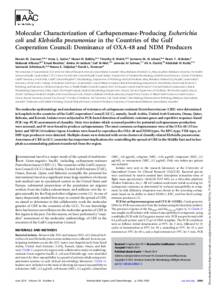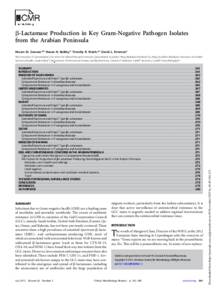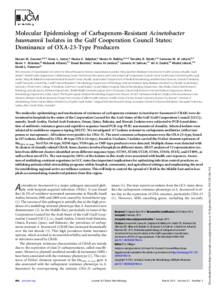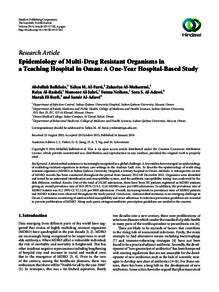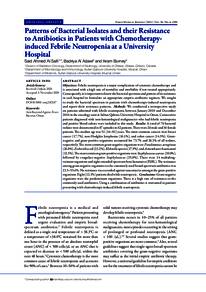وثيقة
Molecular characterization of carbapenemase-producing escherichia coli and klebsiella pneumoniae in the countries of the Gulf Cooperation Council : dominance of OXA-48 and NDM producers.
المعرف
DOI: 10.1128/AAC.02050-13
المساهمون
Sartor, Anna L., مؤلف
Balkhy, Hanan H., مؤلف
Walsh, Timothy R., مؤلف
Al-Johaniyah, Sameera M., مؤلف
Al-Jindan, Reem Y., مؤلف
Al-Faresi, Mubarak., مؤلف
Ibrahim, Emad., مؤلف
ِAl-Jardaniyah, Amina., مؤلف
Al-Abri, Seif., مؤلف
Al-Salman, Jameela., مؤلف
Dashti, Ali A., مؤلف
Kutbi, Abdullah H., مؤلف
Schlebusch, Sanmarié., مؤلف
Sidjabat, Hanna E., مؤلف
Paterson, David L., مؤلف
الناشر
American Society for Microbiology.
ميلادي
2014-03
اللغة
الأنجليزية
الموضوع
الملخص الإنجليزي
The molecular epidemiology and mechanisms of resistance of carbapenem-resistant Enterobacteriaceae (CRE) were determined in hospitals in the countries of the Gulf Cooperation Council (GCC), namely, Saudi Arabia, United Arab Emirates, Oman, Qatar, Bahrain, and Kuwait. Isolates were subjected to PCR-based detection of antibiotic-resistant genes and repetitive sequence-based PCR (rep-PCR) assessments of clonality. Sixty-two isolates which screened positive for potential carbapenemase production were assessed, and 45 were found to produce carbapenemase. The most common carbapenemases were of the OXA-48 (35 isolates) and NDM (16 isolates) types; 6 isolates were found to coproduce the OXA-48 and NDM types. No KPC-type, VIM-type, or IMP-type producers were detected. Multiple clones were detected with seven clusters of clonally related Klebsiella pneumoniae. Awareness of CRE in GCC countries has important implications for controlling the spread of CRE in the Middle East and in hospitals accommodating patients transferred from the region.
المجموعة
ISSN
0066-4804
URL المصدر
قالب العنصر
مقالات الدوريات

